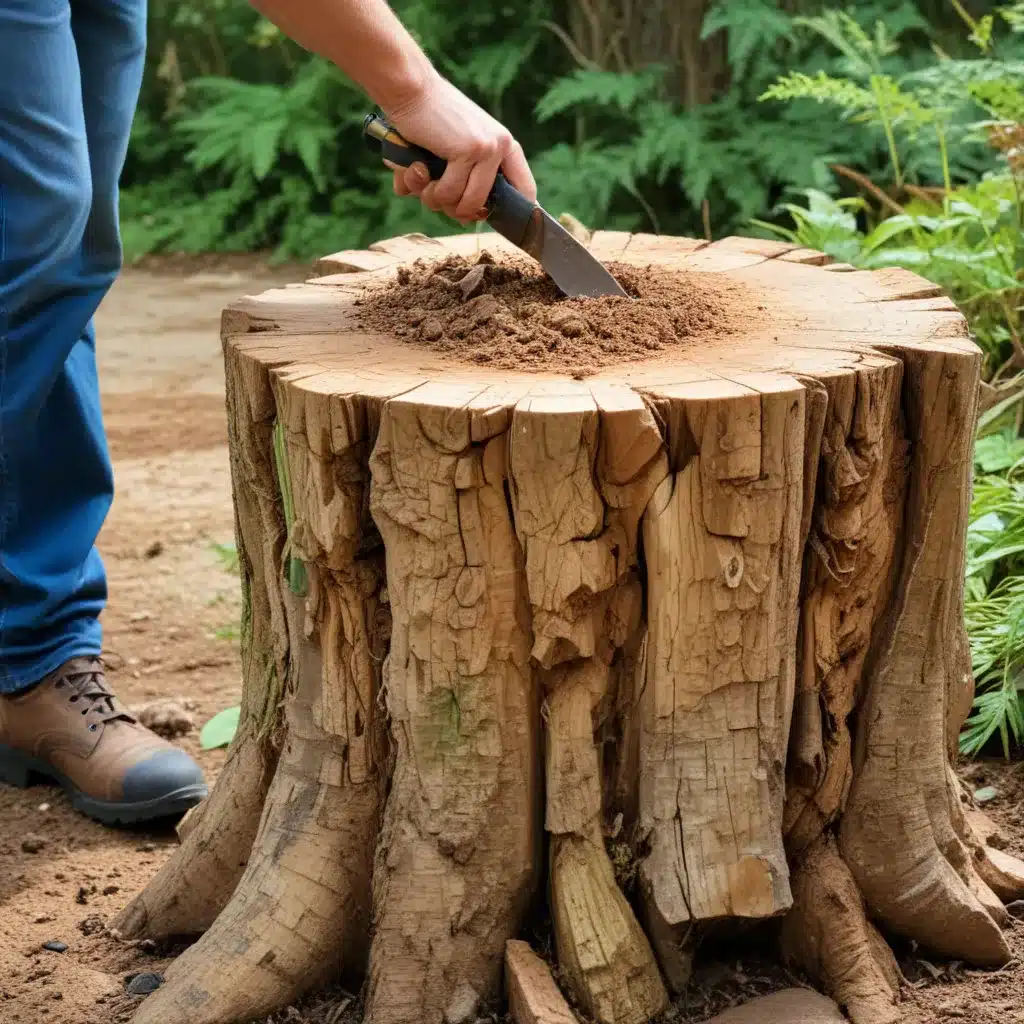
Stump Removal Techniques
When a tree is felled, the remaining stump can pose a significant obstacle to achieving a harmonious, uninterrupted landscape. Stump grinding emerges as a practical solution, utilizing specialized equipment to reduce the stump down to below ground level. This process not only eliminates the unsightly remnant but also prepares the area for seamless integration with the surrounding environment.
The stump grinding procedure involves the use of a powerful machine equipped with a rotating cutting disc. This disc, often tipped with carbide teeth, methodically grinds the stump into small wood chips that can be easily removed. The depth of the grinding can be precisely controlled, ensuring the stump is reduced to the desired level, typically 6-12 inches below the soil surface.
Equipment and Tools for Stump Grinding
The key to effective stump removal lies in the selection of the appropriate stump grinder. These machines come in various sizes and power capacities, allowing arborists and landscapers to tackle stumps of varying diameters and hardness. Smaller, walk-behind models are well-suited for residential projects, while larger, self-propelled grinders are deployed for commercial and municipal applications.
In addition to the grinder itself, other essential tools include:
- Protective equipment: Chainsaw chaps, hard hats, safety glasses, and steel-toed boots are crucial for safeguarding the operator during the grinding process.
- Cleanup tools: Rakes, shovels, and wheelbarrows are used to collect and dispose of the wood chips generated by the grinding.
- Backfilling materials: Topsoil, compost, or a custom soil blend may be required to fill the void left by the removed stump.
Safety Considerations in Stump Grinding
Stump grinding can be a hazardous task, requiring meticulous attention to safety protocols. Operators must be well-trained and experienced in the use of the equipment, as the rotating disc can pose serious risks if mishandled. Proper personal protective equipment, as mentioned earlier, is non-negotiable.
Furthermore, the process can generate significant debris and dust, necessitating the establishment of a safe work zone to protect nearby people and property. Careful planning and communication with the client are essential to ensure a smooth and safe stump removal operation.
Seamless Landscape Integration
The primary goal of stump grinding is to create a seamless, visually appealing landscape. By reducing the stump to below ground level, the area can be easily integrated with the surrounding environment, allowing for the installation of new plantings, the restoration of turf, or the continuation of hardscaping elements.
Backfilling and Leveling
Once the stump has been ground down, the resulting void must be properly backfilled and leveled to ensure a smooth, even surface. This process typically involves the use of topsoil, compost, or a custom soil blend, which is carefully tamped and compacted to prevent future settling or unevenness.
Grass and Vegetation Restoration
In many cases, the stump removal process can leave the ground disrupted, with exposed soil and potential for erosion. To restore the area to its former glory, the application of grass seed, sod, or the planting of new vegetation may be necessary. This step not only enhances the aesthetic appeal but also helps to stabilize the soil and prevent further disturbance.
Soil Compaction and Disturbance
While stump grinding is generally an effective method of removal, the process can lead to soil compaction and disturbance. The heavy machinery used in the operation, as well as the grinding and backfilling activities, can impact the soil structure and disrupt the natural ecosystem. Arborists and landscapers must be mindful of these potential environmental effects and take steps to mitigate them, such as utilizing specialized equipment or techniques to minimize soil compaction.
Waste Disposal and Recycling
The wood chips generated by the stump grinding process can be repurposed in a variety of ways. Many tree care service providers offer the option to leave the chips on-site, where they can be used as mulch or incorporated into the soil to improve its fertility and drainage. Alternatively, the chips may be collected and transported to a composting facility or biomass energy plant for further processing and recycling.
Qualifications and Certifications
When selecting a stump grinding service provider, it is essential to ensure they possess the necessary qualifications and certifications. Reputable companies often employ Certified Arborists or Certified Tree Care Safety Professionals, individuals who have undergone rigorous training and demonstrated expertise in the field of arboriculture and tree care.
Pricing and Cost Factors
The cost of stump grinding can vary depending on a range of factors, including the size and location of the stump, the accessibility of the site, and the level of complexity involved in the removal process. TriCounty Tree Care offers transparent and competitive pricing, with a focus on providing high-quality service and optimal results for their clients.
Customer Reviews and Satisfaction
Engaging a reliable and experienced stump grinding service is crucial to ensuring a seamless landscape transformation. By reviewing customer testimonials and ratings, homeowners and property managers can gain valuable insights into the quality of service, attention to detail, and overall satisfaction of previous clients.
In conclusion, the art of stump grinding is a vital component in the pursuit of a harmonious, visually appealing landscape. By leveraging the right equipment, adhering to safety protocols, and employing meticulous techniques, arborists and landscapers can effectively remove unsightly stumps and pave the way for a truly seamless outdoor environment. As you embark on your next landscape project, consider the transformative power of professional stump grinding to unlock the full potential of your property.


